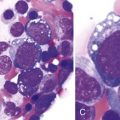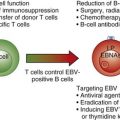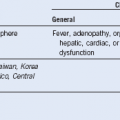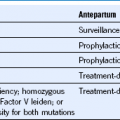Chapter 44 Late Complications of Hematologic Diseases and Their Therapies
Neuropsychologic Sequelae After Hematopoietic Cell Transplantation in Adults
The few studies describing neurocognitive sequelae in adults undergoing hematopoietic cell transplant (HCT) suggest that these patients are at risk for developing adverse sequelae related to neuropsychologic functioning, such as slowed reaction time, reduced attention and concentration, and difficulties in reasoning and problem solving1; memory impairment2–5; problems with executive functioning and processing speed3; and cognitive impairment.1–3 Reduced memory function is associated with older age, longer interval since HCT, chronic graft-versus-host disease, and long-term cyclosporine use.6 Other predictors include fatigue and poor physical functioning. Lower education level and poorer social functioning appear to impact cognitive performance.3 It is therefore prudent to query post-HCT patients regarding perceived deficits in neuropsychologic functioning and to refer patients with these problems to a neuropsychologist who is experienced in the follow-up care of HCT patients.
Evaluating Survivors for Potential Late Effects
Table 44-1 Late Effects Associated With Conventional Therapy for Acute Lymphoblastic Leukemia and Non-Hodgkin Lymphoma
| Common Therapeutic Exposures | Potential Late Effects |
|---|---|
| Vincristine | Peripheral neuropathy, Raynaud phenomenon |
| Corticosteroids | Cataracts, osteopenia, osteoporosis, avascular necrosis |
| Asparaginase | No known late effects |
| Mercaptopurine | Hepatic dysfunction (rare) |
| Thioguanine | Portal hypertension, hepatotoxicity (when used continuously in maintenance therapy) |
| Methotrexate (systemic) | Osteopenia, osteoporosis, osteonecrosis, renal dysfunction (rare), hepatic dysfunction (rare) |
| Methotrexate (intrathecal, high-dose), or cytarabine (high-dose) | Neurocognitive deficits, clinical leukoencephalopathy |
| Cranial or craniospinal irradiation | Neurocognitive deficits, clinical leukoencephalopathy, cataracts, hypothyroidism, second malignant neoplasm in radiation field (e.g., skin, thyroid, brain), short stature, scoliosis or kyphosis, obesity |
| Anthracyclines | Cardiomyopathy, arrhythmias, subclinical left ventricular dysfunction, secondary AML |
| Cyclophosphamide | Hypogonadism, hemorrhagic cystitis, dysfunctional voiding, bladder malignancy, secondary AML or MDS |
| Blood products | Chronic viral hepatitis, HIV |
AML, Acute myeloid leukemia; HIV, human immunodeficiency virus; MDS, myelodysplastic syndrome.
Table 44-2 Late Effects Associated With Conventional Therapy for Acute Myeloid Leukemia
| Common Therapeutic Exposures | Potential Late Effects |
|---|---|
| Anthracyclines | Cardiomyopathy, arrhythmias, subclinical left ventricular dysfunction, secondary acute myeloid leukemia |
| Corticosteroids | Cataracts, osteopenia, osteoporosis, avascular necrosis |
| Asparaginase | No known late effects |
| Cytarabine (high dose) | Neurocognitive deficits, clinical leukoencephalopathy |
| Blood products | Chronic viral hepatitis, human immunodeficiency virus infection |
Table 44-3 Late Effects Associated With Conventional Therapy for Hodgkin Lymphoma
| Common Therapeutic Exposures | Potential Late Effects |
|---|









